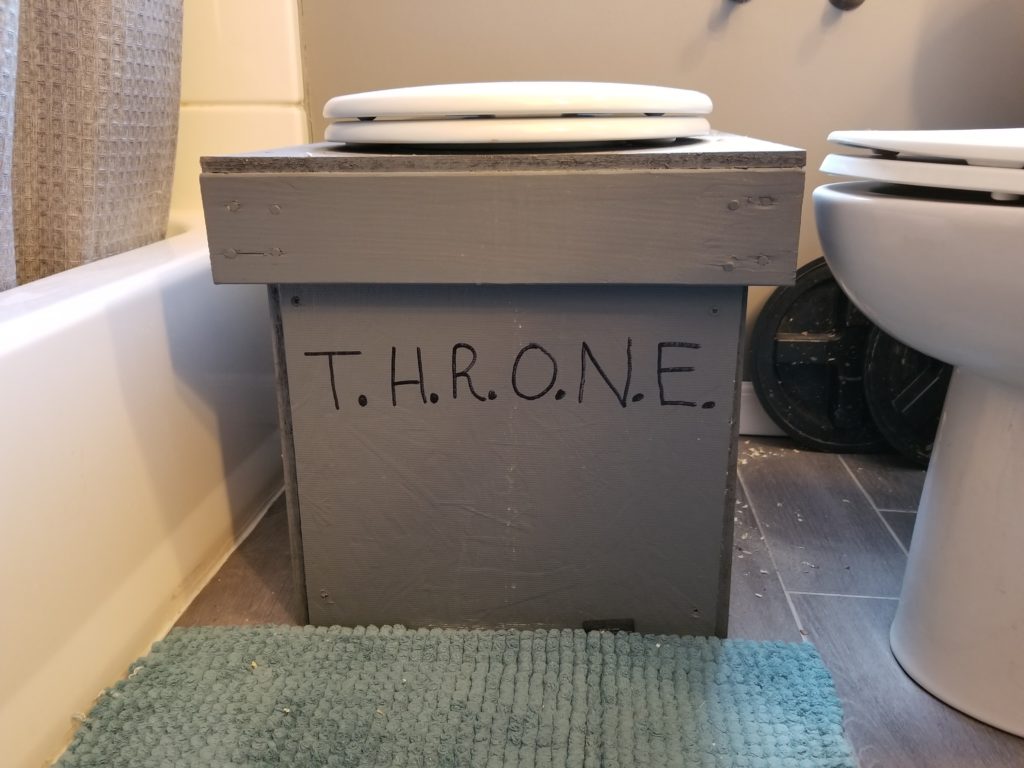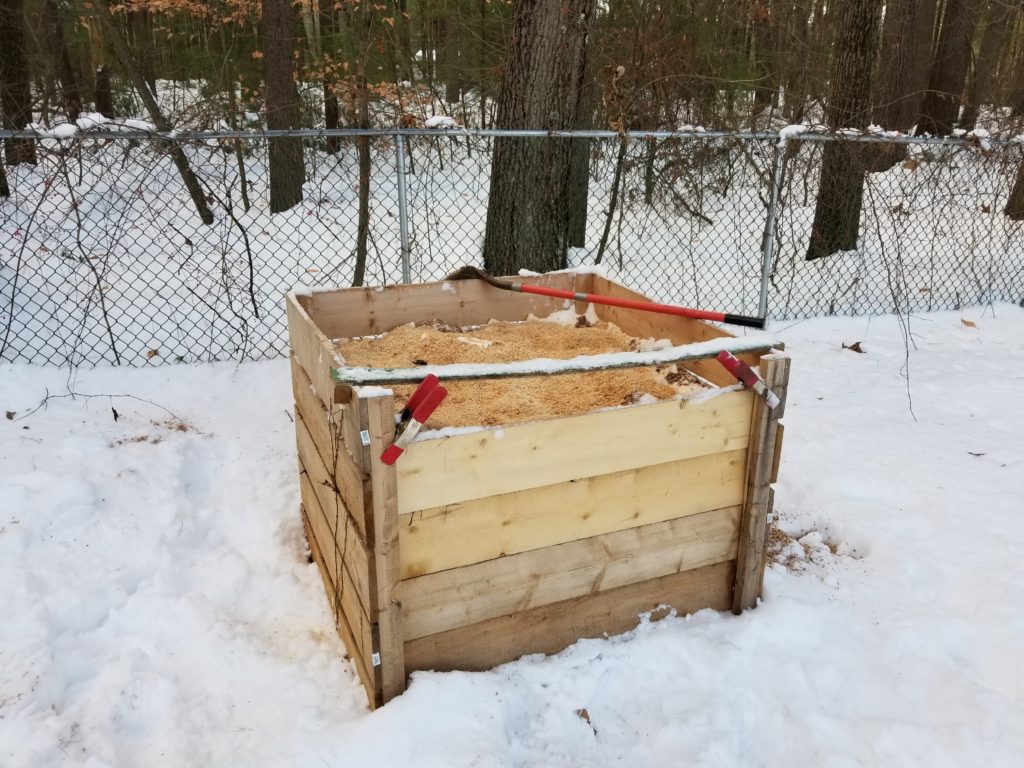It occurs to me that for those of you who weren’t following this blog when it was a Facebook photo album – or even if you were, you may well have missed this picture. This thing here is the original T.H.R.O.N.E., which stands for “temporary household repository of nutritive excrement”, in case you were wondering.

Shown here in our conventional house’s bathroom, originally with the intention of using it for just a few months to see whether (a) it really was odor-neutral (it was, even in summer), (b) it was free of flies and such (it was, even in summer), (c) it was too much bother to maintain (it’s not), and (d) how we did or didn’t like actually using the thing (we’re fine with it, as have been most of our guests).
Well, that was back in like April or May of 2019 and here we are in December, still using it. Needless to say, we’ve become quite accustomed to it. This is good news, as we were intending to use this same concept for the HomeBox and wanted to be quite sure it was going to work. There was one piece still missing from the test run, even after several months: how does the outdoor compost do in the winter? It’s winter now and I have begun to collect winter data.

Here’s the outdoor compost pen, shown with a fresh covering of sawdust (partly from my shop, partly from the Connecticut Valley School of Woodworking, who make sawdust much faster than I do). You’ll notice right away there’s snow all around. This photo was taken in the morning, a week after about a foot and a half of snowfall. My temperature probe said it was 18F ambient. When I approached the compost, there was a decent pile of snow atop it and the question, at 18F, was whether the compost itself had frozen solid.
This is relevant because the Humanure Handbook, from which we’ve been taking guidance about how to do this, says the most effective way to add to the compost is not to layer it on top, but rather to “open it up” — dig down a bit and make a hollow — and dump new stuff in where the action is. This makes a lot of sense, biologically speaking, but would surely be precluded by a pile frozen solid. There is plenty of moisture in the pile, so an ice block was not out of the question. However, there are two other factors at work here: there’s a lot of fluffy matter in the form of leaves, peat moss, and sawdust, each of which contributing to the non-solidness of the pile. Secondly, there’s the exothermic process of compost itself, heating the pile from within. Would the pile insulate the microbes at the core well enough that they would continue to work, even in the winter? Would that heat be enough to keep the pile from freezing solid?
Today, at 18F, it was time to find out. Granted, it’s been both above and below freezing the last few days, but it had certainly been below freezing for a solid 12 hours so if it was gonna be frosty, I’d expect at least a little bit of frosty on top, right? The snow atop the pile had shown some signs of melting, but since it had been a week since the snowfall, I could not rule out ordinary melting unrelated to the heat of the pile. I removed the snow, eager to see whether there was frostiness on the top layer.
There was not! The top layer was perfectly easy to open up, which I did, and promptly aimed my infrared thermometer at what had moments ago been about a foot, maybe 16″ deep into the pile. 38F. Not exactly hot and steamy, but a solid 20 degrees warmer than ambient and because it was open to the air, obviously cooling quickly. Okay. It’s not a raging inferno of compost activity, but it’s definitely not dormant, either!
I don’t really care if the compost is cooking over the winter. Huge commercial piles can self-insulate well enough that they run year-round. My 48-cubic-foot compost pen certainly doesn’t even begin to compare with those. As far as I’m concerned, as long as it doesn’t freeze solid, I’m good. And today it wasn’t solid. Now that I’m thinking about it, even if it does freeze solid, I could still make deposits. These would simply require more cover since they’d be on rather than in, but that’s okay. If new deposits froze and stayed there til spring, to then join the compost fun below them, that would, in fact, be totally ok. I suppose, in that case, it’s a bit of a moot point. If the pile is warm enough to take the deposit in, great. If not, it’s too cold for it to matter that it couldn’t. The new stuff wouldn’t be missing out on compost action because there wasn’t any.
The astute observer will notice that the level in the compost pen is within one board of the top. That’s about 7 inches, or roughly 8 cubic feet. My other concern for the winter was that as the pen got full, the compost activity would not be able to keep up given the cold, and the pen would become totally full before spring. What does it matter if I needed a new pen? From a practical standpoint, a new pen certainly wouldn’t be able to even start composting for real given the temperature and the low initial volume of material. It would no longer be a continuation of the experiment. It would be a new experiment. Had I been thinking that far ahead, I would have transitioned to a second pen in the early Autumn, perhaps starting it with some active compost from the first, so there was critical mass to sustain it into the winter. Alas, not so. Given the circumstances, and the goal of the experiment, we will continue to use the original pen until it is actually full and then we’ll probably revert to the water toilet. This is a little bit because I don’t want to start another pen in the winter but more because one of these things takes a solid year, maybe a year and a half, to fully render its contents into neutral earth, according to the HH.
I’d like to let that finishing process run to completion, without another pen in progress, just in case it takes longer. I certainly wouldn’t want to be moving out in 2 or 3 years to the HomeBox Homestead and leave behind an unfinished humanure compost pile in process. It’s one thing to do it on your own land, but it wouldn’t be proper to leave anything but the neutral, finished compost for some other tenant.